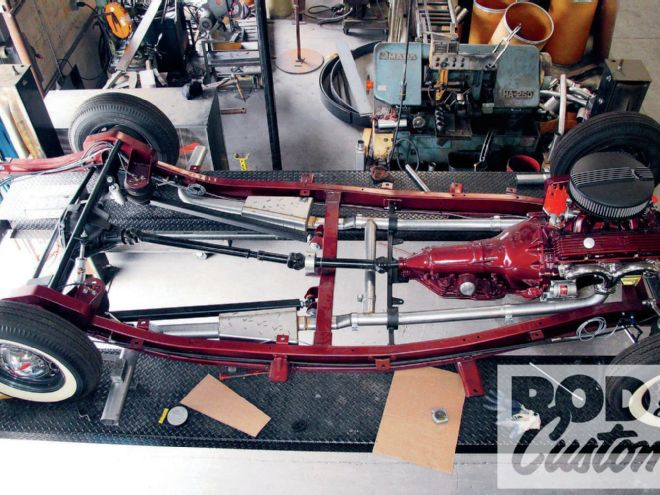
Stance and profile. Color combination and harmonious execution. These are all things we have total control of when constructing a custom. Oftentimes, however, those choices require certain sacrifices, most notably of the mechanical nature. Take, for instance, your typical full-custom's exhaust system: generally anything but typical.
As is often the case, the exhaust system doesn't get its full attention till after the suspension's been done. Ultimately, that causes sacrifices in component efficiency. In other words, not having sufficient space to route a full system, having to use incorrect tubing size, or skimping (or even eliminating altogether) on mufflers. For those of you who've fallen into this afterthought category, follow along—for those who've thought out and planned their custom builds with exhaust in mind from the get-go, peruse for amusement.
In all honesty, I've always taken exhaust systems fairly seriously, even if it's after the fact, such as was the case with a certain 1947 Chevy of mine. Not too long ago, we thrashed on retrofitting the Fleetline's chassis with a JBC two-link setup complete with an AccuAir ride height control system. If you recall, the two-link required quite a bit of real estate in the mid-frame area. Fortunately, with this in mind, JBC designed a transmission crossmember in a low-profile manner and added hoops to route the exhaust pipe. However, the adjustability of the rearend, presence of air springs (mounted off the link arms) and shocks, and the overall low stance of the chassis all contributed to the "good luck with the exhaust" factor, so for some time, it was left to ponder.
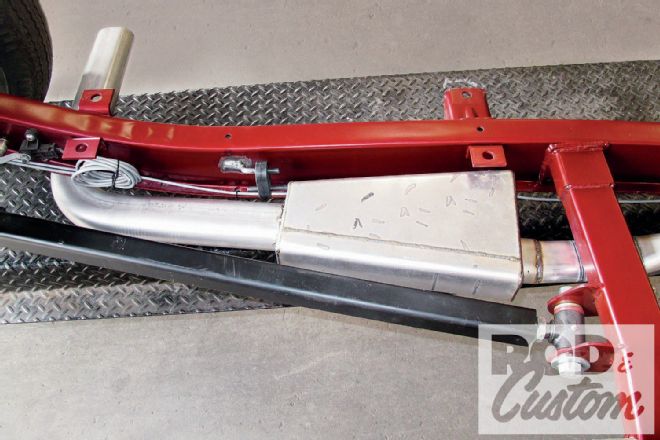
Of the variety of options considered, ranging from mild to wild to ridiculous, we couldn't quite agree on the best "route" to take, no pun intended. The main issue of determining a feasible way to incorporate a decent system was being compounded by being able to do so with a resulting exhaust that not only worked, but sounded good. Eventually, the decision was out of my hands, literally—enter Ron DiDonato.
While you may not be familiar with DiDonato's name, his company, SpinTech Performance Mufflers, is quite common in today's street and performance exhaust market. As the name suggests, the company has perfected the SpinTrap-incorporated mufflers (see accompanying photo/cap) as well as the integration of oval exhaust tubing. While the mufflers are custom-built to order (meaning precise back pressure and tuning guaranteed), the specialized tubing allows for adequate exhaust pipe to be routed in inadequate locations (and not sacrifice any flow/volume characteristics). One visit with DiDonato and I was sold on his product; the issue of applying his business' practice to my Chevy was simply a matter of hauling the chassis to SpinTech and letting him work some magic.
Granted, this is no glasspacks and pencil tips–type exhaust system. Then again, this is no by-the-books traditional custom, either. I plan on driving the bias-plies off 'er when she's finally on the road, and as such, wanted an exhaust that worked in harmony with the drivetrain, all while accommodating the chassis' extremely limited spacing.
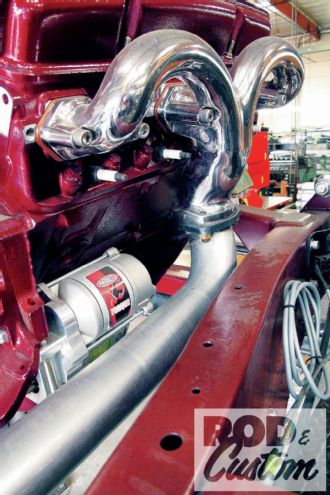 1. Up until this point, the only part of the exhaust system that I was sure about: Speedway’s polished-stainless Tru-Ram manifolds, which is precisely where SpinTech Performance Mufflers began routing the custom system on the Fleetline.
1. Up until this point, the only part of the exhaust system that I was sure about: Speedway’s polished-stainless Tru-Ram manifolds, which is precisely where SpinTech Performance Mufflers began routing the custom system on the Fleetline.
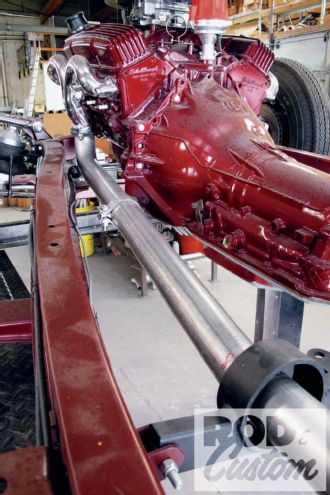 2. If it appears that the forward section of (round) tubing routes “above” the bottom edge of the Chevy’s framerails …
2. If it appears that the forward section of (round) tubing routes “above” the bottom edge of the Chevy’s framerails …
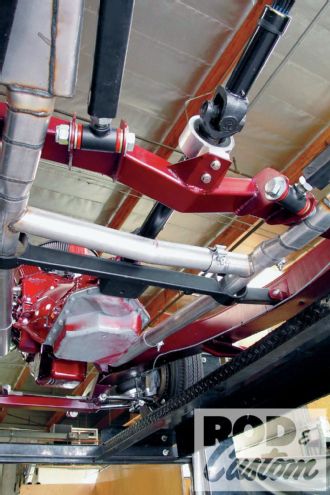 3. … that’s because it does! One of the biggest downsides to owning an extremely lowered custom is constantly dragging the exhaust. Not this time around.
3. … that’s because it does! One of the biggest downsides to owning an extremely lowered custom is constantly dragging the exhaust. Not this time around.
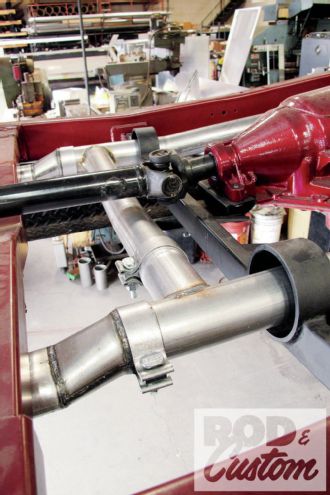 4. Along with taking advantage of the existing crossmember hoops in JBC’s transmission crossmember, SpinTech opted to integrate an H-pipe immediately after, something that while not often used in customs, will optimize exhaust flow and help equalize back pressure much better than standard dual exhaust.
4. Along with taking advantage of the existing crossmember hoops in JBC’s transmission crossmember, SpinTech opted to integrate an H-pipe immediately after, something that while not often used in customs, will optimize exhaust flow and help equalize back pressure much better than standard dual exhaust.
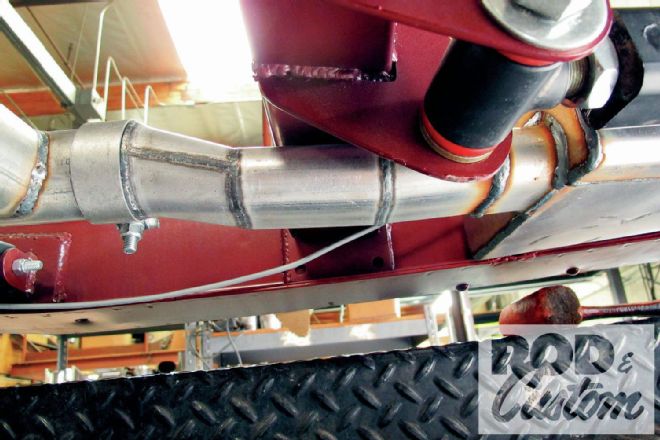 5. And finally some oval tubing to speak of. Actually, as you can see, SpinTech transitioned the tubing from the H-pipe to the oval with a custom-made “wedge”. Try finding that part in your typical universal kit.
5. And finally some oval tubing to speak of. Actually, as you can see, SpinTech transitioned the tubing from the H-pipe to the oval with a custom-made “wedge”. Try finding that part in your typical universal kit.
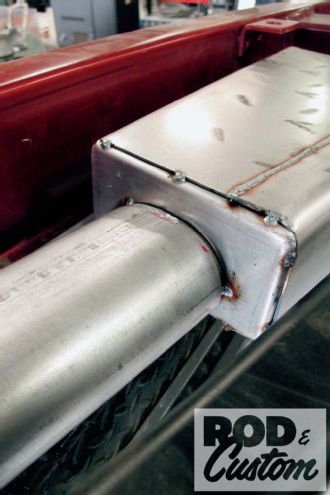 6. SpinTech does offer specific-application mufflers, however, all are handmade.
6. SpinTech does offer specific-application mufflers, however, all are handmade.
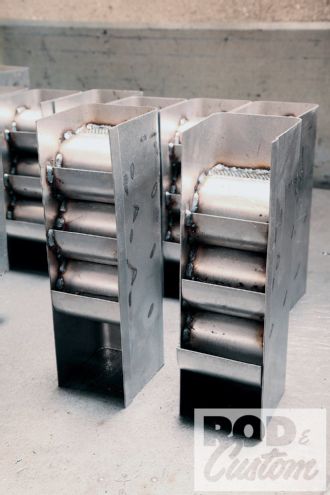 7. The one constant is the internal construction, that being a specific array of “spin baffles” that trap, vent, and direct exhaust gases—never wearing out, constantly performing as designed.
7. The one constant is the internal construction, that being a specific array of “spin baffles” that trap, vent, and direct exhaust gases—never wearing out, constantly performing as designed.
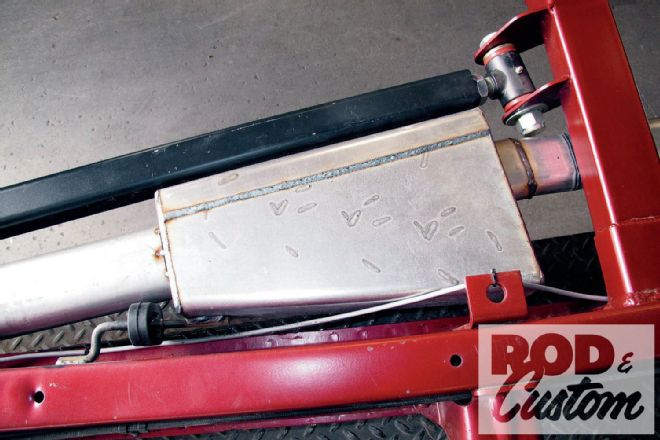 8. SpinTech fabricated the Fleetline’s unique mufflers to perfectly fit snug between the framerail and suspension arm on each side, in a reversed-wedge shape.
8. SpinTech fabricated the Fleetline’s unique mufflers to perfectly fit snug between the framerail and suspension arm on each side, in a reversed-wedge shape.
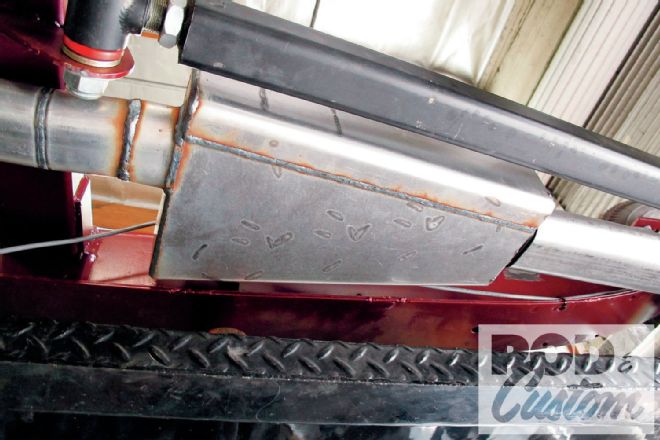 9. Again, as with the entire exhaust leading up to this point, the mufflers are positioned above the bottom of the ’rail.
9. Again, as with the entire exhaust leading up to this point, the mufflers are positioned above the bottom of the ’rail.
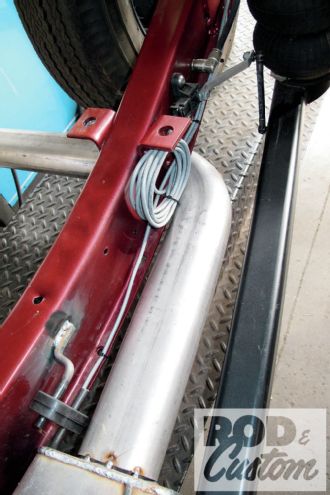 10. A 90-degree section of 1 3/4x3-inch oval tubing was created to cap off the system—forward the rear wheel. While routing “over” the rearend is/was feasible, it would’ve been a real chore to accomplish. Forward-axle side exits will more than suffice.
10. A 90-degree section of 1 3/4x3-inch oval tubing was created to cap off the system—forward the rear wheel. While routing “over” the rearend is/was feasible, it would’ve been a real chore to accomplish. Forward-axle side exits will more than suffice.
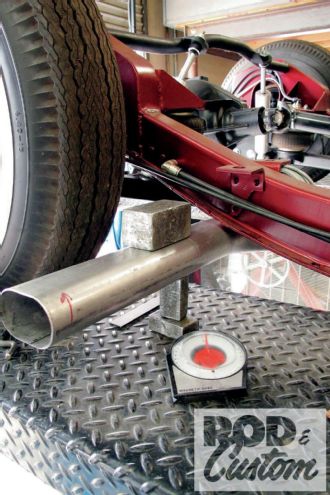 11. After positioning/leveling, SpinTech left the
"tips" with excess length, as we’ll determine the final exit strategy once the body’s reinstalled and we have a better idea of what we’re dealing with.
11. After positioning/leveling, SpinTech left the
"tips" with excess length, as we’ll determine the final exit strategy once the body’s reinstalled and we have a better idea of what we’re dealing with.
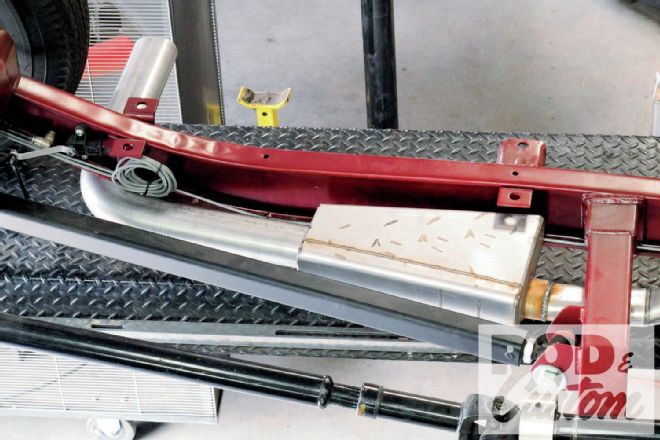 12. Once satisfied with the tubing and mufflers, SpinTech added appropriate hangers/tabs and welded the entire system up.
12. Once satisfied with the tubing and mufflers, SpinTech added appropriate hangers/tabs and welded the entire system up.
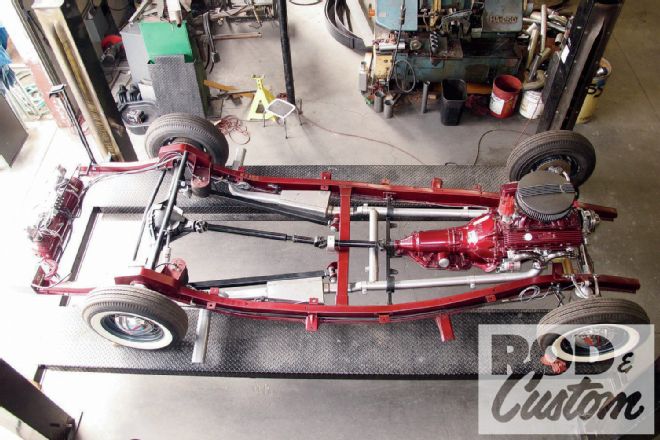 13. Though aluminized, the new system will be sent out for ceramic heat coating—that is, after we’ve fired ’er up and given the exhaust the old audible test. If it’s too loud (not likely for me), SpinTech can adjust the muffler baffling configuration, though we doubt that’ll be required.
13. Though aluminized, the new system will be sent out for ceramic heat coating—that is, after we’ve fired ’er up and given the exhaust the old audible test. If it’s too loud (not likely for me), SpinTech can adjust the muffler baffling configuration, though we doubt that’ll be required.